By Tanush Kaso
Memorie.al /publishes the unknown testimonies of the former political prisoner, Tanush Kaso, President of the Association of Prisoners and Political Prisoners of Albania, who suffered over ten years in the camps and prisons of that regime, regarding the acts of the ‘5 year olds’ where they worked for years as slaves with thousands of convicts, starting from the National Stadium ‘Qemal Stafa ”Tirana, Kamza Farm, Juba Canal, Maliq Swamp (three camps: Vloçisht, Orman-Pojan and Nishavec), Aerodrom of Kuçova, Gosa Farm in Kavaja, Beden Canal, Peqin-Elbasan Railway, Gramsh-Lozhan Motorway, “Agimi” Palaces in Tirana, Bulqiza Mine, Peqin-Kavaja Canal, Vlashuk Canal in Myzeqe, etc., where from difficult working and living conditions, as well as torture and ill-treatment, lost the lives of dozens of convicts, most of whom still do not know their graves!
“When the purple tribunes of the congresses of the Albanian Labor Party proudly counted the works of the five-year plans, which she called her own, the people knew that most of them bore the stamp of sweat and blood of political prisoners “of these” state slaves “, who were forced to work unpaid, under the guise of heartless police officers, in the most difficult places and in extremely difficult conditions.” This is what Tanush Kaso, President of the Association of The Political Persecuted of Albania, who has suffered for more than ten years in the camps and prisons of the communist regime of Enver Hoxha. political prisoners, who worked on the greatest works that were built in communist Albania from the end of the War in 1945 until the end of the ’80s. In the following article, we are publishing a part of Tanush’s testimonies there are sos, which deals with the works built by political prisoners until the mid-1950s and how they were treated by the state of the dictatorship of the proletariat.
1945- Completion of “Qemal Stafa” Stadium
The “Qemal Stafa” National Stadium in Tirana, which was started by the Italians and left halfway due to the war, was completed by political prisoners in 1945. About 300 political prisoners were accompanied daily by many armed guards from the two prisons of the capital to the stadium, where they worked all day like animals and also returned to the prison in the evening, to continue the next day and for many months in a row, the same forced ritual. After the completion of the stadium, some of the convicts were sent to work for the establishment of the Kamza farm, where they roamed in opening canals, arranging lands, etc. About 400 prisoners housed in the forced labor camp, set up in some old army barracks, near the village of Valias (12 km north-west of Tirana) worked for almost two years in a row under strict supervision and supervision. by police and guards, without any schedule and living conditions. In 1946, political prisoners worked on the construction of the Juba Canal in the Durrës Region. The camp with 800 prisoners was set up near the village of Juba in Durrës. They opened a 5 km long canal. with a width of 10 m. and depth 6 m. From the severe conditions of the muddy terrain, the insufficiency of food, consisting only of a soup of 600 gr. cornbread, as well as from torture and bondage behind bars and inhumane beatings, fell ill and twenty political prisoners died.
Drying of the Maliq Swamp
In 1947-’52, hundreds of political prisoners worked to drain the Maliq Swamp in the Korça Region. In extremely difficult conditions of a swampy terrain, with caterpillars and mosquitoes, without boots and other protective equipment, with very poor food and under the pressure of executioners hanging over their heads, they worked for five years, more than two thousand political prisoners. They were divided into three camps: Vloçisht, Orman-Pojan and Nishavec, villages near the Maliq Swamp. The commander of these camps was Tasi Marko, a more terrible figure than that of the German “SS”, the brother of Rita Marko, a senior communist official who managed to become a member of the Politburo and secretary of the Central Committee of the ALP. In these camps, the most cruel and primitive tortures were used, such as: dipping to the throat in the toilet pit and burying alive in the swamp mud. There have been many cases of suicide. From malaria and other diseases, dozens of people have died. In total there are over sixty dead. The drying of this swamp was planned and designed many years ago by the Italians. The communist government decided to do it with the unpaid work of its ‘slaves’. In order to direct these works that were carried out in a primitive way, without the necessary tools and the proper technique, the most capable engineers that Albania had were appointed, graduated from the best and experienced universities in Europe, but who were not seen with the naked eye. well from the communist regime of Enver Hoxha. When they, facing difficulties with a professional dedication, were nearing the end and hoping that the work would be appreciated, the State Security surprisingly plotted against them the false accusation of “economic sabotage” and punished them all very severely, starting with imprisonment long, up to shootings and hanging on the rope. The so-called “Maliqi Engineers Group” has been widely spoken and written about in those years and beyond. But, both in the novel “Marsh” and in the film with the same subject, products of “socialist realism”, the truth is alienated, not given as it is, just as the certain scheme that the communists liked, with the enemy, required of the class ”and“ revolutionary vigilance ”. Not a word is said about political prisoners, about their work as medieval slaves.
Construction of Kuçova airport
In 1948-52, hundreds of political prisoners worked on the construction of the Kuçova Military Airfield. The camp of political prisoners, who were working on the construction of that airport, was set up at the Vajgurore Bridge. For four years in that country, more than 2,000 convicts sweated. The works were led by Soviet military engineers, who served the long-term goals of establishing the hegemony of their state in the Balkans and beyond. To be mentioned is a mass escape from this camp. Some were able to cross the southern border and enter the “Free World”. Others were caught and sentenced to various terms of imprisonment or even shooting. While in the years 1949- ‘51, work was done for the establishment of Gosa farm in the district of Kavaja. The work front there consisted of sewers and land systems. The camp was located near the village of the same name, 12 km. south of Kavaja. For almost 2 years, over 600 political prisoners worked there, always hungry and mistreated. There were 15 dead from the convicts. In the years 1950-’52, they worked on the opening of the Beden Canal, in the district of Kavaja. The camp was set up near the village of Beden, a few kilometers southwest of Kavaja. More than 1,000 political prisoners worked for about two years as slaves to open a 15-kilometer irrigation canal. long, on a hilly terrain with tuff layers, which in some places could be opened with the use of mines, from which there were also accidents. From the hardships of life and hard work, more than twenty convicts fell ill and died. Terrible was in this camp, the death of a completely innocent Mirditor, named Nikolle Bardhoku, from Bushkashi. Just to the whim of a policeman, he stripped naked, tied himself to a pole in the camp yard, and was left in the scorching July sun until his body was wounded. He screamed in pain and asked for salvation, but no one dared to approach him and suffer his fate. He died there the next day, as a bound saint. The commander of the camp was Haxhi Pela, from the Berat Region. In 1950, work was done on the construction of the Peqin-Elbasan railway. Located in a camp near the Bona Bridge, not far from the city of Peqin, they worked on the construction of the route of the second railway of our country, that Peqin-Elbasan (which was the continuation of the first railway Durrës-Peqin), 700 prisoners’ policy. Also, in 1950, political prisoners worked on the opening of the Bishqemi tunnel on the Peqin-Elbasan railway (400 m long). For one year, 900 political prisoners housed in a camp near the village of Bishqem, located about 15 km. west of Elbasan, worked to open the longest railway tunnel in our country. It lacked the necessary technique and no one cared about securing the lives of those people in the underground, where they worked primitively, with chisels and chisels. As a result, there were deaths from accidents at work, for which no one was responsible or “paid”. In 1950, work was also done on the opening of the Gramsh-Lozhan highway. The camp of political prisoners who worked for the opening of this road was located near the village of Lozhan, near Maliq. There were about 900 people, who walked several kilometers every day, accompanied by police and border guards to get to work. Fatigue was captivating and the treatment inhuman. Most of them were Chams, convicted only because they had opposed the Hoxha Government’s proposal to fight against the Greek state on behalf of the communists of the Greek EAM. For this attitude of theirs, that government forcibly deprived the Greek citizenship of all the immigrants from Chameria, thus depriving them of the possibility of returning to their native lands.
Bulqiza Mine
In the years 1950-’53, political prisoners worked for the extraction of chromium ore in the Bulqiza mine. In the years that followed, it was the ordinary prisoners who were sent to the extremely difficult mine of Bulqiza, to extract from the depths of primitive galleries, the much sought-after chrome ore. But in certain periods, especially in the first years, selected contingents of political prisoners, young and physically strong, stayed there for a long time. From the harshness of the climate, the hardships of work, and the inhuman treatment of the prisoners, who worked day and night in three shifts, that mine had become a horror, a real hell, so much so that its name was used by the Security of State to scare people. “Careful”! – they said to an unwanted person, we can take you to Bulqiza… “. Others understand themselves. There have been many cases of homicides and suicides, as well as accidents at work. Some have been disappeared by the State Security itself in the depths and abysses of the underground, without any eyewitnesses. There were also large collapses in that camp, which affected dozens of people, and for which the press and radio of that time, kept complete silence, as those accidents were considered a “state secret”. There have been more casualties from ordinary prisoners. The bodies of many of the dead could not be buried by their families, some could not even be found. Their children have not received any compensation or pension as required by international human rights conventions. Some desperate attempts have been made to escape from that hell, to escape from there. But in 50 years, very few prisoners have been able to cross the border. Some have been captured and re-convicted, others have been left dead by the bullets of guards and pursuers. One of the luckiest, they say, was a brave boy from a village in Korça, named Isuf Lumi, who on a dark and rainy night, in the early years, was able to pass the siege through a barrage of bullets, and after many vicissitudes, he arrived in the dream land, in America.
Peqin-Kavaja canal
In the years 1952- ‘55, political prisoners worked on the opening of the Peqin-Kavaja Canal, which was 50 km. tall. The labor camp, relocated three times in three years, on the line between Peqin and Kavaja, had about 2,000 political prisoners, who with a very heavy work, in very difficult conditions, with lack of water and food. unfortunately, they opened the longest irrigation canal of our country. As in other camps, here was practiced tying through poles and beatings for those who could not achieve the norm of forced labor. There were three killed by the use of dynamite in some rocky parts of the hills. There in that camp, more than 20 prisoners lost their lives from torture, famine and disease. Also, in the years 1952-’54, work was done for the opening of the Vlashuk Canal, in the field of Myzeqe. The camp was set up 10 km. in the north-west of the city of Kuçova, with 1500 political prisoners, who during two years opened a canal of only 2 km long, but very deep. The canal was made to take water from the river Devoll, and to irrigate the field of Myzeqe. Shortly before the completion of the works, due to the rains and the bad technique used, the embankment collapsed and had to be restarted from scratch. In this camp, in particular, worked many Greek captives, former military so-called “monarcho-fascists”, captured by the communist forces of EAM, during the fratricidal war of 1945-’49 in Greece and handed over by them to the government Albanian. Later, at the request of the Greek government, those who survived were repatriated. Out of desperation and despair of salvation, some killed themselves. About 40 Albanians have died of starvation, fatigue and ill-treatment, as well as from various diseases. The number of Greeks killed is not known exactly. In the years 1953-’55, work was done on the construction of “Agimi” palaces in Tirana. About 600 prisoners, placed in camp no. 4 in Tirana, have worked for two years in a row for the construction of “Agimi” palaces, located near the former “Leadership Bloc”. What is most remembered from this camp was the attempt for a mass escape, through an underground tunnel opened with great care and secrecy, called the “Tunnel of Freedom”. Shortly before the decision to leave, the main organizers were arrested, in circumstances that still remain unclear and shrouded in mystery. Those who were locked in the death cell were: Mark Zef Pali, Isuf Velçani, Abdylla Bajrami, Zyhdi Mancaku and Besim Latifi. The latter was spared. While the other four when they were taken to be shot, clashed with the executioners and remained there dead under the blows of the iron levers./Memorie.al






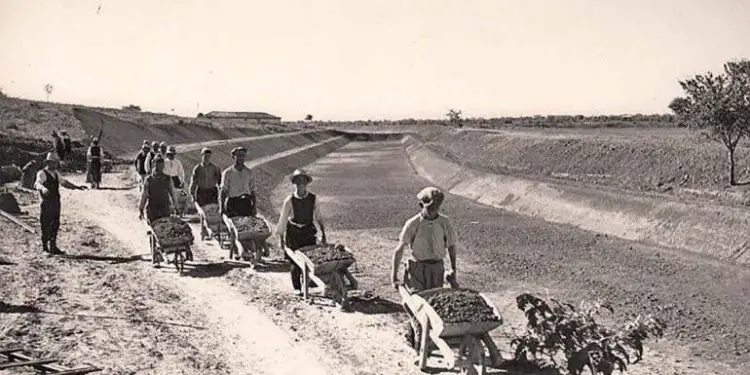

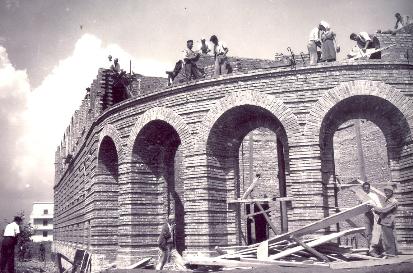
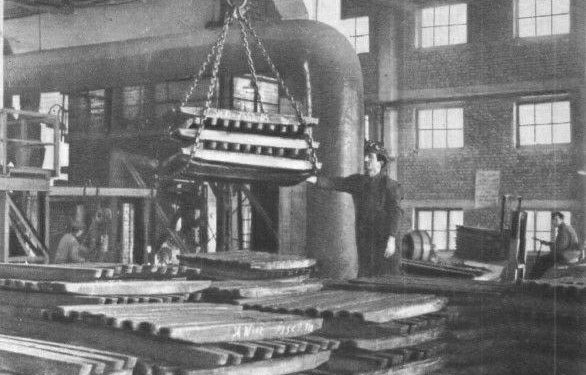
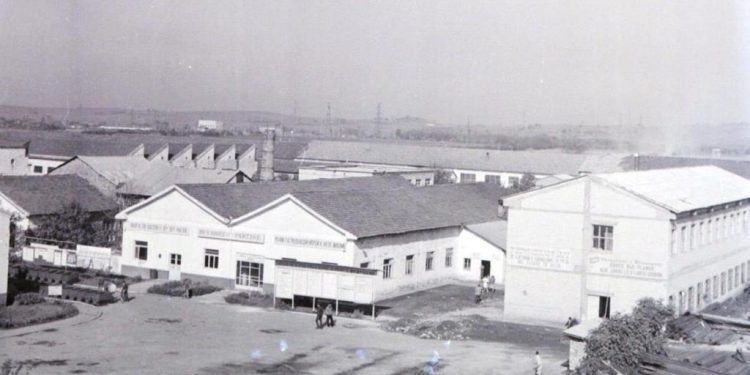
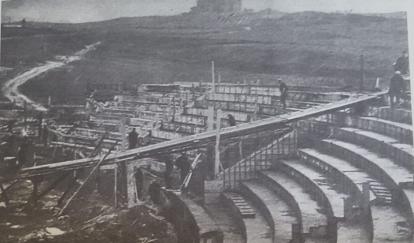

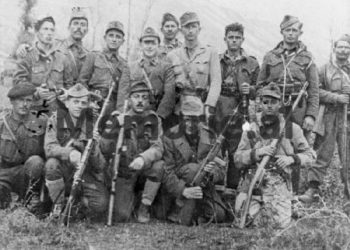
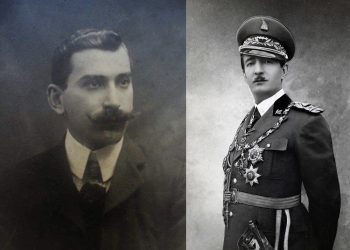
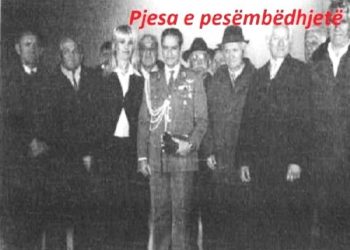
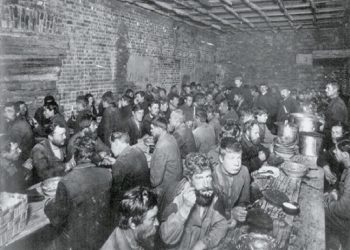
![“When we were standing in the public garden near the Durrës port, one of the ‘sampistët’ (security/police forces) fired his ‘Kalash’ [Kalashnikov rifle] at the head of the boy from Librazhd, and the blood instantly burst out…” / The rare testimony of Sofika Prifti Cara](https://memorie.al/wp-content/uploads/2024/06/admin-ajax-1-2-350x250.jpg)
